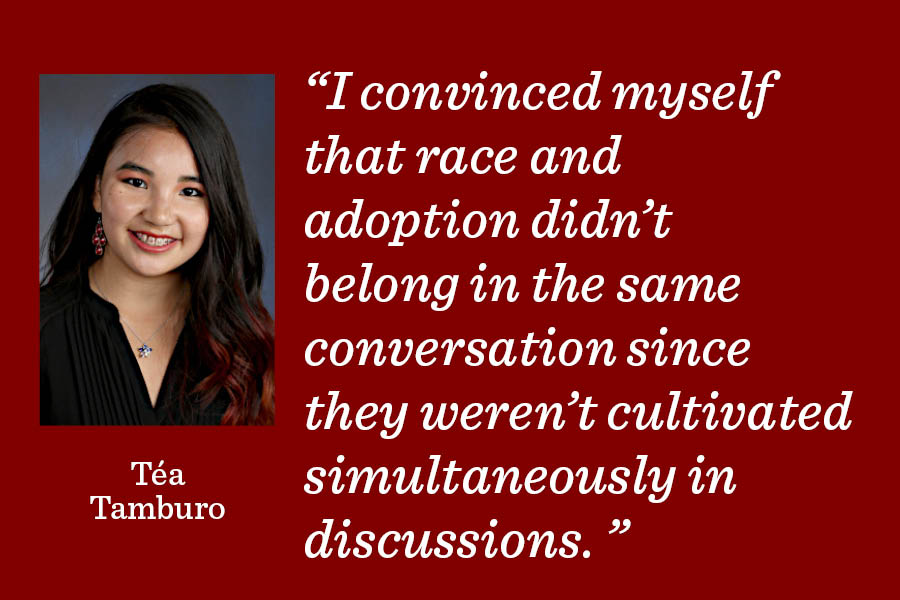Inclusion at Lab must mean more than a single identifier
Berk
Lab should consider adopted people in their discussions surrounding equity and inclusion, according to Midway content manager Téa Tamburo.
October 28, 2020
In seventh grade, I attended an Asian Students’ Association meeting. Discussing what it’s like being Asian American, the topic was how we see ourselves fitting into the Lab community.
However, I withheld a key part of my identity. I was adopted from Hunan, China, and I had attended this meeting with the goal of meeting others who identify as Chinese adoptees.
It’s not that I didn’t want to share this about myself at the meeting, but I would’ve been the only one discussing multiple identifiers around balancing two cultures. Being raised in a white family that I’m not biologically related to, I want to maintain a tie to my native culture but also partake in the traditions of my adopted family, thus balancing two sides of myself: the Chinese and the American. In that moment, I convinced myself that race and adoption didn’t belong in the same conversation since they weren’t cultivated simultaneously in discussions.
As a school, we need to expand our dialogue around diversity, equity and inclusion to represent and include those from adoptive families. Focusing on single identifiers, such as race and gender, isn’t enough to make adoptees feel included in the DEI movement and sets back the goal of communal inclusion.
When discussing identity, it’s easy to focus only on certain identifiers and how these define our self-perception. However, doing this allows space for only those identifiers to shine through, disregarding intersecting identities that don’t fall into neat categories. Personally, my centering identifier is being an international adoptee, so pushing conversations around DEI that disregard the intersection of race and adoptive status leaves out the intersecting identities of those in the adopted community.
Adoptees should feel welcome sharing their experiences and utilizing their perspectives to advance the DEI movement at Lab. Because adoption is not addressed and the adoptee community is small, this defining identity can easily be overlooked and overshadowed, thus silencing the voices of adopted students.
Since adoption isn’t incorporated into discussions, I often question whether being adopted is a valid identity. During group discussions, I stick to discussing ties to my Asian background, rather than opening up about international adoption, due to a fear of alienation from my peers. Omitting adoption from the discussion makes us question if the only valid part of our identity is race and creates a fear that our intersecting identities are not valid.
International adoptees often do not look like their parents, basically putting on display that they were adopted. This makes the identity of “international adoptee” public and prominent. Race is interconnected with international adoption in this way, making international adoptees balance systemic racism and feelings of not fitting into their adoptive families. These identity conflicts are complex, so they should be reflected in discussions around the impact that family structure, race and self-identity has on us as a community and as individuals. When we do, we can truly create an inclusive environment.





























































Laura Doto • Oct 29, 2020 at 11:26 am
Téa – Being adopted is certainly a valid identity! Your intersectional sense of identity is part of what makes you YOU — AND what makes you uniquely qualified to share and explore the impacts of family structure, race, and self-identity as our Lab community commits to greater inclusivity. My hope is that there are other international adoptees who read this and feel seen.
Thank you.